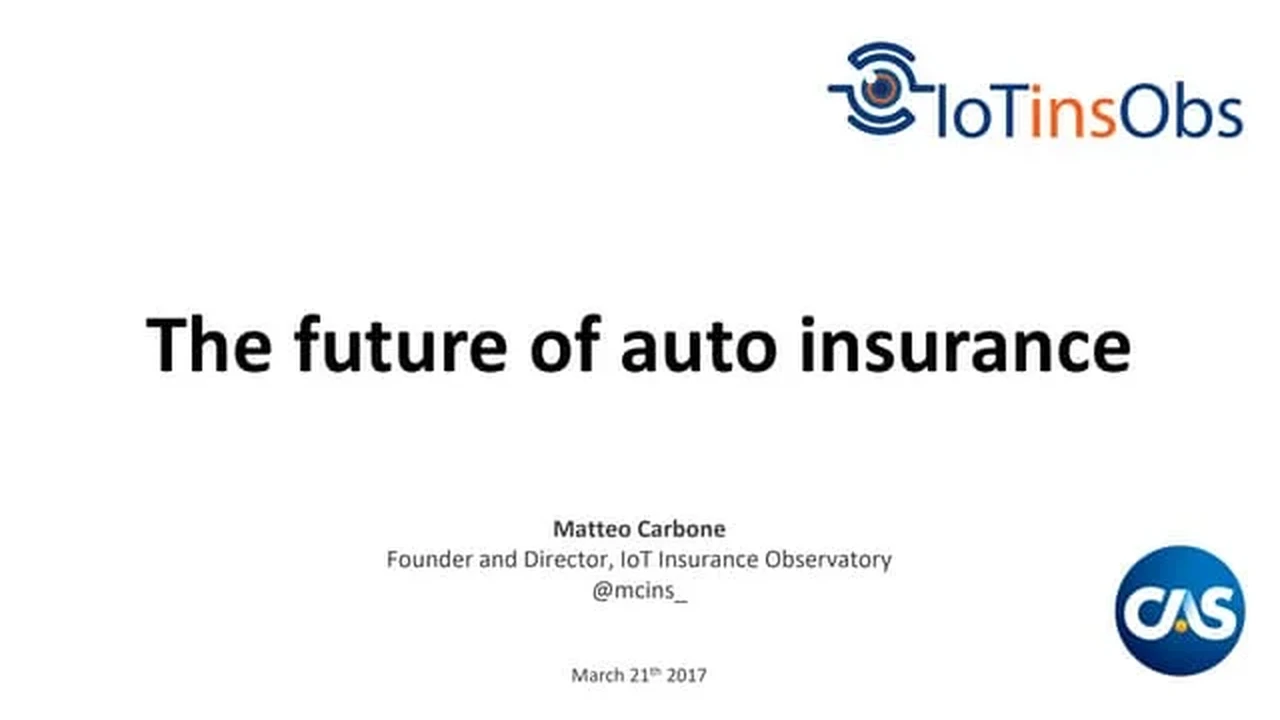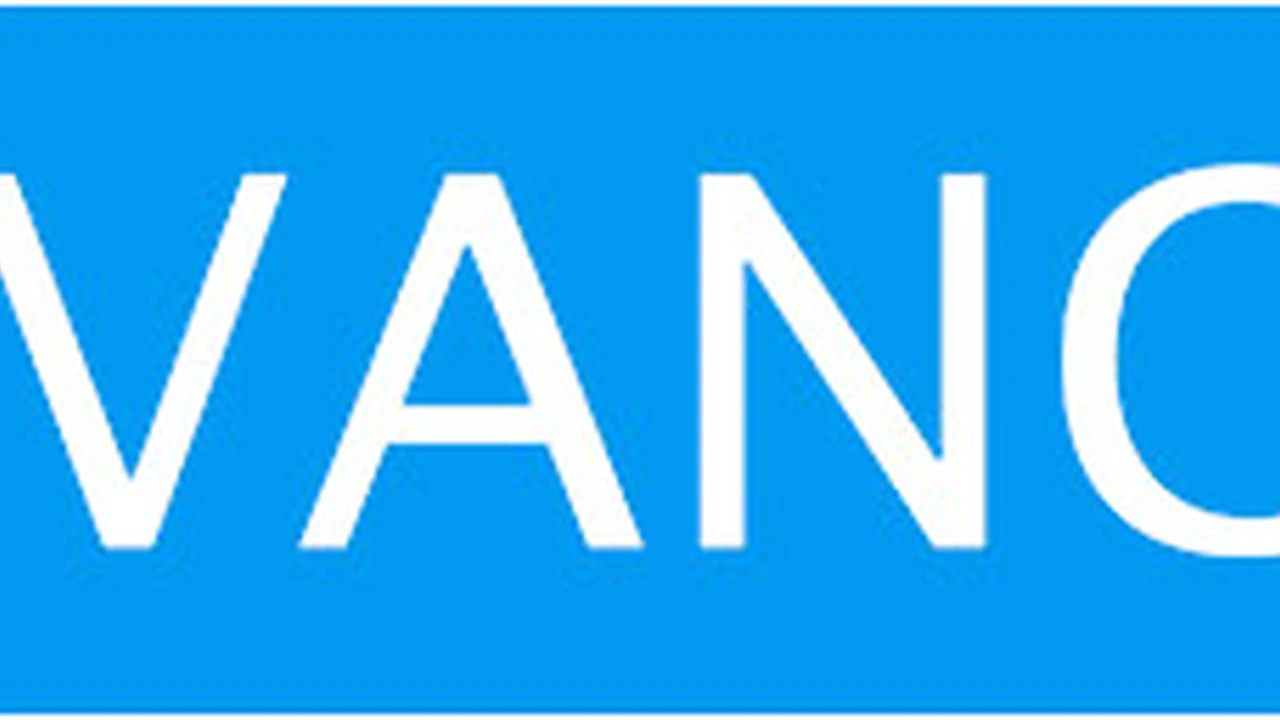5 Ways to Prepare for Future Auto Insurance Rate Changes
Discover 5 ways to prepare for future auto insurance rate changes. Stay ahead of potential increases and maintain affordable coverage.

5 Ways to Prepare for Future Auto Insurance Rate Changes
Hey there, savvy driver! Let's talk about something that probably doesn't get you super excited but is incredibly important for your wallet: auto insurance rates. They're not static, right? They can go up, they can go down, and sometimes it feels like they just do whatever they want. But what if I told you there are proactive steps you can take to brace yourself for those inevitable shifts? We're not just talking about finding a new provider when your rates spike; we're talking about setting yourself up for long-term success and keeping those premiums as low as possible, no matter what the market throws at you. This isn't just about saving a few bucks next year; it's about building a resilient strategy for your auto insurance for years to come. So, let's dive into five smart ways to prepare for future auto insurance rate changes, ensuring you're always in the driver's seat when it comes to your policy and your budget.
Understanding the Dynamics of Auto Insurance Rate Fluctuations
Before we jump into the 'how-to,' it's super helpful to understand 'why' auto insurance rates change. It's not just random! A bunch of factors, both personal and external, play a role. On the personal side, things like your driving record (accidents, tickets), your age, where you live, the type of car you drive, and even your credit score (in many US states) can significantly impact your premiums. If you get a speeding ticket, expect a bump. If you move to a high-crime area, your rates might increase due to higher theft risks. But then there are the bigger, external forces that affect everyone. Inflation, for example, makes everything more expensive, including car parts and labor for repairs, which in turn drives up insurance costs. More frequent or severe weather events (think hurricanes, floods, hailstorms) lead to more claims, pushing rates higher. Changes in state regulations, increased traffic congestion, and even the rise of distracted driving can all contribute to a general upward trend in insurance prices. Understanding these underlying dynamics helps you anticipate changes and react strategically. It's like knowing the weather forecast before you plan your outdoor activities – you're just better prepared!
Strategy 1 Proactive Policy Review and Comparison Shopping
This might sound obvious, but it's often overlooked: don't just let your policy auto-renew! Your current insurer might have been the best deal a few years ago, but the market is constantly shifting. New companies emerge, existing ones change their pricing models, and your personal circumstances evolve. The first and arguably most crucial step is to make a habit of reviewing your policy at least once a year, ideally a few weeks before your renewal date. Look at your coverage limits, your deductibles, and any endorsements. Do they still meet your needs? Have you added any new drivers or vehicles? Have you removed old ones? Once you've got a clear picture of what you currently have, it's time to comparison shop. And I mean really comparison shop. Don't just get one quote; aim for at least three to five from different providers. Online comparison tools are fantastic for this, but sometimes a quick call to an independent agent can also yield surprising results, as they can often quote multiple carriers for you. This isn't about being disloyal; it's about being smart with your money. You might find the exact same coverage for hundreds of dollars less, or you might discover that your current insurer is still competitive, which gives you peace of mind. Think of it as an annual financial check-up for your car insurance.
Recommended Comparison Tools and Platforms
When it comes to comparison shopping, you've got a lot of options. Here are a few popular and effective platforms, keeping in mind that availability and specific features might vary slightly between the US and Southeast Asian markets:
- For the USA:
- Gabi: This platform is great because it connects to your existing insurance account and automatically compares your current coverage with over 40 top providers. It's super efficient and can often find you significant savings without much effort.
- The Zebra: Known for its comprehensive comparison capabilities, The Zebra allows you to get quotes from dozens of companies simultaneously. They also provide a lot of educational content to help you understand your options.
- NerdWallet / Bankrate / ValuePenguin: These financial aggregators offer robust comparison tools and often partner with various insurers to provide quotes. They also have excellent guides and reviews to help you make informed decisions.
- Direct Insurer Websites: Don't forget the big players like GEICO, Progressive, State Farm, Allstate, and Liberty Mutual. While comparison sites are great, sometimes going directly to an insurer's site can yield unique discounts or promotions.
- For Southeast Asia (examples, as the market is more fragmented):
- CompareAsiaGroup (e.g., MoneySmart in Singapore/Malaysia, MoneyGuru in Thailand): These platforms are leading financial comparison sites in various Southeast Asian countries. They allow you to compare car insurance quotes from a range of local and international providers.
- Direct Insurers: In many SEA countries, direct insurers like AXA, FWD, MSIG, Tokio Marine, and local giants (e.g., NTUC Income in Singapore, Etiqa in Malaysia) have strong online presences where you can get quotes.
- Local Brokerage Sites: Many countries have local online insurance brokers (e.g., PolicyStreet in Malaysia, GoBear in some regions before its pivot) that aggregate quotes. A quick Google search for 'car insurance comparison [your country]' will usually point you to the most popular local options.
Usage Scenario: Let's say you're in California, USA, and your current premium is $1,800 annually. You use Gabi, link your current policy, and within minutes, it shows you a comparable policy from another reputable insurer for $1,450. That's $350 in savings for about 10 minutes of work! Or, if you're in Singapore, you use MoneySmart, input your vehicle details, and find that while your current insurer quoted S$1,200, another provider offers similar comprehensive coverage for S$1,050. These tools are designed to make the process as painless as possible, so there's really no excuse not to use them.
Strategy 2 Optimizing Your Driving Habits and Vehicle Safety
Your driving behavior is a huge factor in your insurance rates. It's not just about avoiding accidents and tickets (though that's paramount!). Many insurers now offer telematics programs, also known as usage-based insurance (UBI), which monitor your driving habits in real-time. These programs typically use a small device plugged into your car's OBD-II port or a smartphone app to track things like mileage, speed, braking habits, and even the time of day you drive. If you demonstrate safe driving, you can often qualify for significant discounts. Some programs offer an upfront discount just for signing up, with further savings based on your driving score. This is a fantastic way to take control of your rates, especially if you know you're a careful driver. Beyond telematics, consider vehicle safety features. Modern cars with advanced driver-assistance systems (ADAS) like automatic emergency braking, lane-keeping assist, and blind-spot monitoring can often qualify for discounts because they reduce the likelihood of accidents. Even installing an anti-theft device can lower your comprehensive coverage premium. It's about making yourself and your car less risky in the eyes of the insurer.
Popular Telematics Programs and Safety Features
Let's look at some specific examples of telematics programs and safety features that can help you save:
- Telematics Programs (USA Examples):
- Progressive Snapshot: This program uses a device or app to track your driving. Safe drivers can save an average of $145.
- State Farm Drive Safe & Save: Uses a mobile app or OnStar to monitor driving. Discounts can be up to 30%.
- Allstate Drivewise: An app-based program that rewards safe driving with cash back and policy discounts.
- GEICO DriveEasy: Another app-based program that offers personalized rates based on driving behavior.
- Telematics Programs (Southeast Asia Examples):
- AXA SmartDrive (Singapore/Malaysia): Often uses a telematics device to offer discounts based on driving behavior.
- FWD Insurance (various SEA countries): Some FWD policies offer telematics options, especially for younger drivers, to encourage safe driving and provide discounts.
- Local Insurers: Many local insurers are starting to adopt telematics. For instance, in Malaysia, some Takaful (Islamic insurance) providers are exploring UBI models. It's worth asking your local insurer if they offer such programs.
- Vehicle Safety Features:
- Automatic Emergency Braking (AEB): Systems like Subaru's EyeSight or Honda Sensing can detect potential collisions and apply brakes automatically.
- Lane Keeping Assist (LKA) / Lane Departure Warning (LDW): Helps prevent unintentional lane changes.
- Blind Spot Monitoring (BSM): Alerts you to vehicles in your blind spots.
- Adaptive Cruise Control (ACC): Maintains a safe distance from the car ahead.
- Anti-theft Devices: Car alarms, immobilizers, GPS tracking systems (e.g., LoJack in the US, or similar local services in SEA).
Usage Scenario: Imagine you're a young driver in the Philippines, often facing higher premiums. By enrolling in a telematics program offered by a local insurer, and consistently demonstrating safe driving habits (no harsh braking, staying within speed limits), you could see your premium drop by 10-20% after the initial monitoring period. Or, if you're buying a new car in the US, opting for a model with AEB and LKA might qualify you for an immediate 5-10% discount on your collision coverage, making the car not just safer but also cheaper to insure in the long run.
Strategy 3 Leveraging Discounts and Bundling Opportunities
Discounts are your best friends when it comes to lowering insurance costs. And there are so many of them! Many people only think of the obvious ones, but a little digging can uncover a treasure trove of savings. Always ask your insurer (or potential insurers) about every single discount they offer. Common ones include multi-policy discounts (bundling your auto with home, renters, or even life insurance), multi-car discounts, good student discounts (for younger drivers), defensive driving course discounts, low mileage discounts, and even discounts for paying your premium in full or setting up automatic payments. Some insurers offer discounts for certain professions or affiliations. For example, military personnel and veterans often get special rates. Don't assume your insurer will automatically apply every discount you qualify for; sometimes you have to ask! Bundling is particularly powerful. Insurers love customers who bring them more business, so they're often willing to offer substantial savings (sometimes 15-25% or more) if you combine multiple policies with them. This not only saves you money but also simplifies your insurance management, as you're dealing with a single provider for several needs.
Common and Overlooked Discounts
Let's break down some discounts you should definitely inquire about:
- Multi-Policy Discount: Combine auto with home, renters, condo, motorcycle, or even life insurance. This is one of the biggest savers.
- Multi-Car Discount: Insuring more than one vehicle with the same company.
- Good Driver Discount: For drivers with a clean record (no accidents or violations) for a certain period (e.g., 3-5 years).
- Good Student Discount: For full-time students (typically under 25) who maintain a B average or higher.
- Defensive Driving Course Discount: Completing an approved defensive driving course. This is especially useful for older drivers or those looking to offset a minor infraction.
- Low Mileage Discount: If you don't drive much (e.g., less than 7,500 miles/year). Great for remote workers or those with short commutes.
- Anti-Theft Device Discount: For cars equipped with alarms, immobilizers, or tracking systems.
- New Car Discount: Sometimes offered for vehicles that are only a few years old.
- Loyalty Discount: For staying with the same insurer for a long time (though always compare to ensure you're still getting a good deal!).
- Payment Discounts: Paying in full, setting up automatic payments, or going paperless.
- Professional/Affiliation Discounts: For members of certain professional organizations, alumni associations, or employer groups. (e.g., AAA, AARP, military associations).
Usage Scenario: Consider a family in Kuala Lumpur, Malaysia. They have two cars and a home. Instead of insuring each car with a different company and their home with a third, they consolidate all three policies with one major insurer like Etiqa. This bundling could lead to a 15-20% discount across all policies, saving them hundreds of Ringgit annually. Additionally, their eldest child, a university student, maintains excellent grades, qualifying them for a good student discount on their car insurance. These combined savings can significantly offset any general rate increases.
Strategy 4 Adjusting Coverage and Deductibles Strategically
As your car ages and its value depreciates, the amount of coverage you need might change. For older vehicles, especially those that are fully paid off and have a low market value, carrying full comprehensive and collision coverage might not be the most cost-effective choice. The premium you pay for these coverages might outweigh the potential payout if the car is totaled. It's worth doing a cost-benefit analysis: if your car is only worth $3,000, and you're paying $500 a year for comprehensive/collision with a $500 deductible, you're spending a significant portion of the car's value on coverage that might not pay out much more than your deductible. In such cases, switching to liability-only coverage could save you a lot. On the flip side, if you have a newer, more valuable car, consider increasing your deductibles. A higher deductible (e.g., from $500 to $1,000) means you'll pay more out-of-pocket if you file a claim, but it almost always results in a lower monthly premium. If you have a healthy emergency fund, this can be a smart way to reduce your ongoing costs. Just make sure you can comfortably afford that higher deductible if an accident occurs. This strategy requires a bit of financial planning and a realistic assessment of your vehicle's value and your risk tolerance.
When to Adjust Coverage and Deductibles
- Depreciating Vehicle Value: Once your car is 7-10 years old, or its market value drops significantly, re-evaluate if comprehensive and collision are still worth it. Check sites like Kelley Blue Book (USA) or local used car valuation sites (e.g., Carlist.my in Malaysia, SGCarMart in Singapore) to get an estimate of your car's current worth.
- Strong Emergency Fund: If you have enough savings to cover a higher deductible (e.g., $1,000 or $2,500) without financial strain, increasing it can lead to substantial premium reductions.
- Changes in Driving Habits: If you start driving significantly less, your risk of an accident decreases, which might make you more comfortable with a higher deductible or even reducing certain coverages.
- Financial Constraints: If you're facing budget constraints, adjusting deductibles or reducing non-essential coverages can be a quick way to lower your monthly payments, but always ensure you maintain adequate liability coverage.
Usage Scenario: Let's say you're in Bangkok, Thailand, and you own a 12-year-old Toyota Vios. Its market value is now quite low. You're currently paying for Type 1 (comprehensive) insurance, which is the most expensive. After checking its value, you realize the annual premium for Type 1 is almost 15% of the car's worth. You decide to switch to Type 3+ insurance, which covers third-party liability, fire, theft, and own-damage in case of a collision with an identified vehicle, but at a much lower cost. This significantly reduces your premium while still providing essential protection. For your newer family SUV, you decide to increase your deductible from 5,000 THB to 10,000 THB, knowing you have savings to cover it, which shaves off a noticeable amount from your annual premium.
Strategy 5 Maintaining a Stellar Driving Record and Credit Score
This might seem like a no-brainer, but it's the foundation of affordable auto insurance. A clean driving record is the single most impactful factor in keeping your rates low. Every accident, speeding ticket, or moving violation signals to insurers that you're a higher risk, and they'll adjust your premiums accordingly. These infractions can stay on your record for several years, affecting your rates long after the incident. So, drive safely, obey traffic laws, and avoid distractions. It's not just about avoiding fines; it's about protecting your insurance rates. In many US states, your credit score also plays a significant role in determining your insurance premiums. Insurers use credit-based insurance scores as a predictor of how likely you are to file a claim. Generally, individuals with higher credit scores tend to file fewer claims, so they often receive lower rates. While this practice is banned in some states (like California, Hawaii, and Massachusetts), it's prevalent elsewhere. Therefore, maintaining a good credit score by paying bills on time, keeping credit utilization low, and regularly checking your credit report can indirectly lead to lower auto insurance costs. It's another aspect of your financial health that impacts your insurance wallet.
Tools and Tips for Driving Record and Credit Score Management
- Driving Record Management:
- Defensive Driving Courses: As mentioned, these can sometimes remove points from your license or provide a discount.
- Traffic School: If you get a minor ticket, completing traffic school can often prevent points from appearing on your record.
- Regular Vehicle Maintenance: A well-maintained car is less likely to break down or cause an accident due to mechanical failure.
- Avoid Distractions: Put your phone away! Distracted driving is a leading cause of accidents.
- Credit Score Management (USA Focus):
- Credit Monitoring Services: Services like Credit Karma, Experian, or your bank's credit monitoring can help you track your score and identify issues.
- On-Time Payments: Pay all your bills (credit cards, loans, utilities) on time, every time. This is the biggest factor in your credit score.
- Keep Credit Utilization Low: Try to use less than 30% of your available credit.
- Review Credit Reports: Annually check your free credit reports from Equifax, Experian, and TransUnion for errors.
Usage Scenario: Consider a driver in Texas, USA, who recently had a minor fender bender. Instead of just paying the ticket, they enroll in an approved defensive driving course. This not only helps refresh their driving skills but also prevents points from being added to their record, potentially saving them hundreds of dollars in increased premiums over the next few years. Simultaneously, they've been diligently managing their credit cards, paying off balances, and keeping their credit utilization low. When their auto insurance renewal comes up, their excellent credit score helps them secure a more favorable rate compared to someone with a similar driving record but a lower credit score. These combined efforts create a powerful shield against rising insurance costs.
So there you have it! Five solid strategies to help you prepare for and navigate the ever-changing landscape of auto insurance rates. It's all about being proactive, informed, and willing to put in a little effort. By regularly reviewing your policy, optimizing your driving, leveraging every discount, strategically adjusting your coverage, and maintaining a clean record and good credit, you'll be well-equipped to keep your premiums in check and ensure you're always getting the best value for your auto insurance. Drive safe, save smart, and stay ahead of the game!
:max_bytes(150000):strip_icc()/277019-baked-pork-chops-with-cream-of-mushroom-soup-DDMFS-beauty-4x3-BG-7505-5762b731cf30447d9cbbbbbf387beafa.jpg)






